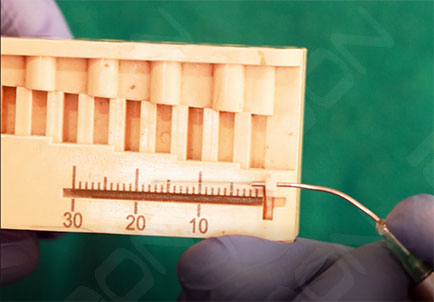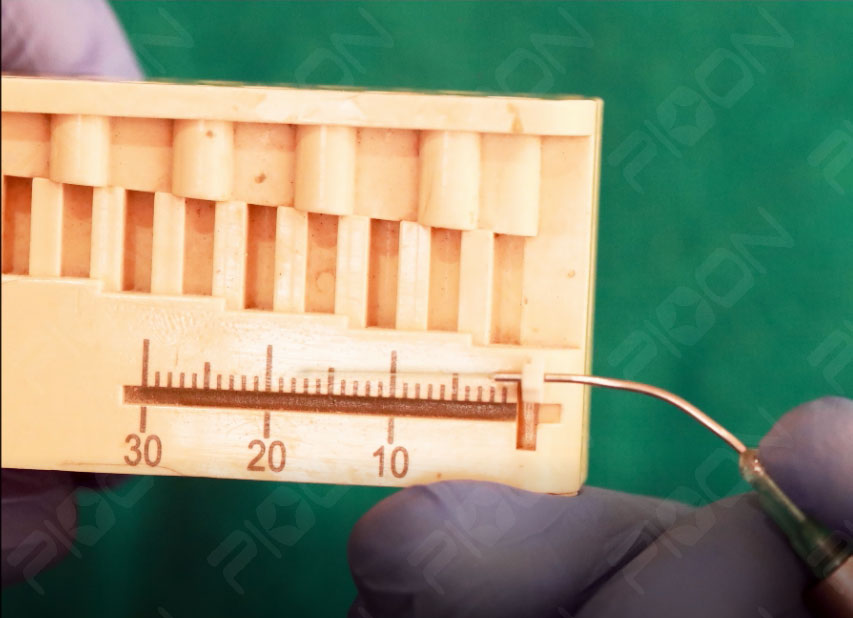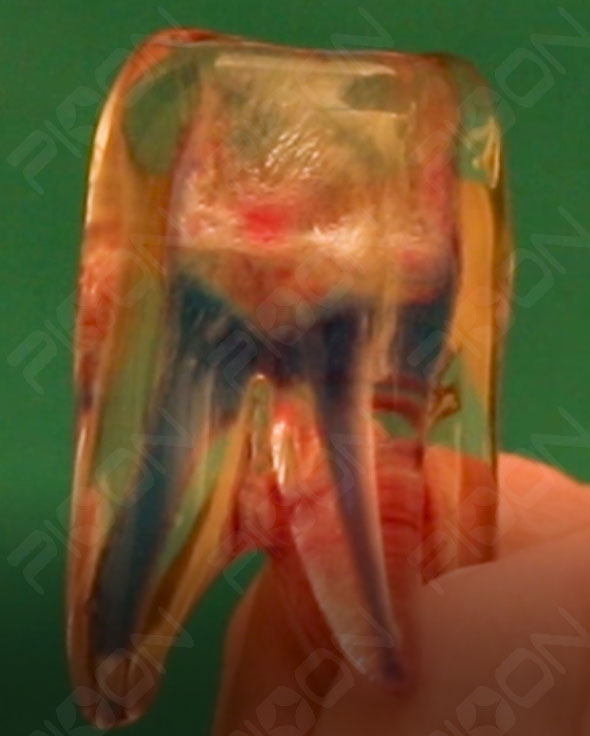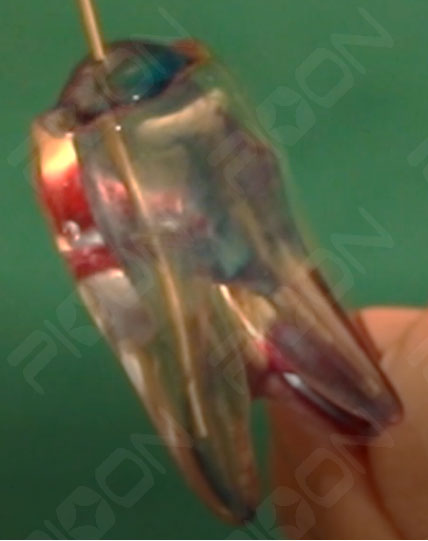
Introduction- A root canal system that is free of infected microorganisms is essential to achieve a periapical healing. Enterococcus faecalis (EF) has been found to be one of the predominant bacteria that are associated with chronic periodontitis and failed root canal treatment. Various chemo-mechanical instrumentation and antimicrobial irrigation have been suggested to eliminate bacteria in the infected root canals. However, because of the complex internal root canal anatomy, it is very
difficult to achieve a sterile root canal system and completely eliminate the infected debris.
Photoactivated Disinfection (PAD) also known as Antimicrobial Photodynamic Therapy (aPDT) is a relatively newer antimicrobial strategy that involves the combination of a non-toxic Photo-sensitizers (PS) or Dyes and corresponding a non-harmful Light source or Laser to disinfect the root canal. The solution selectively targets and tags bacteria when introduced into the root canals. Here Laser light is useful for photochemical activation of oxygen-releasing dyes.
Rationale for the use of Laser – The advantage of PAD is that it selectively eliminates bacteria. Furthermore, it does not affect any other normal tissue and causes no damage to the surrounding tissues. There is no staining on the gingiva or restorations. It also does not encourage the development of any resistant species.
Prerequisite for use of LASER in Permanent Tooth -
Root Canal Preparation – The minimum canal preparation for laser tip to reach upto the apical area corresponds to ISO file size 30.
Photosensitizer/Dyes – Common photosensitizers in PAD include tolonium chloride and methylene blue. They are organic dyes belonging to the phenothiazine family.
Corresponding Laser Wavelength – The laser wavelength (650nm/660nm/810nm) should be chosen according to the affinity for specific photosensitizer/dye
Working length for use of Laser - It is measured 1mm short of actual working length. E.g. If the working length of a canal is 19mm. So 19-1= 18 mm. This 18mm will be the length up to which the laser tip will go inside the canal.
Settings/parameters for laser root canal disinfection – The laser wavelength selected is 650nm with a 300µm non-initiated tip, at 40mW and Continuous Mode
Steps for Root Canal Disinfection - Under rubber dam isolation all the steps till chemomechanical preparation (CMP) remains the same as that in conventional root canal system. PAD is a step before the obturation.
First – Photosensitizer/Dye – Fill the canals with 15Ug/ml toludine blue dye
Second – Wait – Remove the excess dyes from everywhere around the teeth and from the sulcus then Wait for 2 minutes so that the dye is coated everywhere over the walls and biofilms
Use of Laser - Motion or Technique of Use of Laser is as under -
- Withdrawal of the tip from the canal is done at the rate of 2mm/second
- Disinfection starts from apex to canal orifice
- Move the tip in circumferential manner without touching the walls of canal
- Time for laser irradiation is 60sec per cycle.
- Break of 20 secs and repeat the process
- Total number of cycles - 4
Remove the Dye – After the completion of the laser irradiation, wash the canal using sodium hypochlorite solution to remove all the dyes before obturation.
Conclusion - Given the complex root canal anatomy, PAD seems a promising method to eradicate bacteria, even the resistant strain such as Enterococcus Faecalis and others.
References – 1) Dennis M et al. Photoactivated disinfection (PAD) of dental root canal system – An ex-vivo study. Saudi J Biol Sci. 2016 Jan; 23(1): 122–127 2) Michael T Lee. Photo-activated disinfection of the root canal: a new role for lasers in endodontics. Aust Endod J
. 2004 Dec;30(3):93-8. doi: 10.1111/j.1747-4477.2004.tb00417.x.

Fig 1 – Measuring the Laser Tip before the disinfection procedure

Fig 2 – Toludine Blue Dye in the Canal

Fig 3 – Removal of Toludine Blue Dye after Laser Irradiation
By – Dr Shanin Farista
MDS Endodontist
Divas in Laser